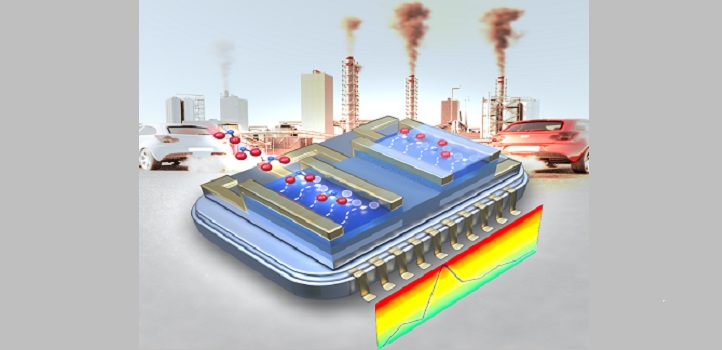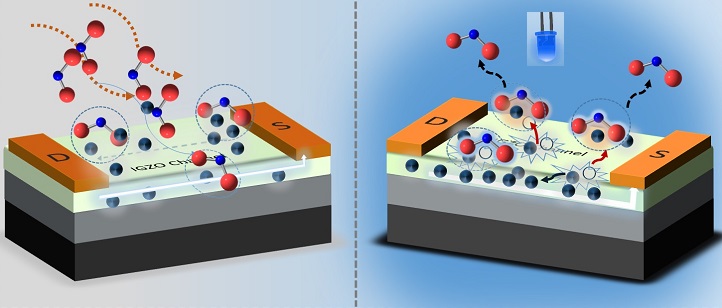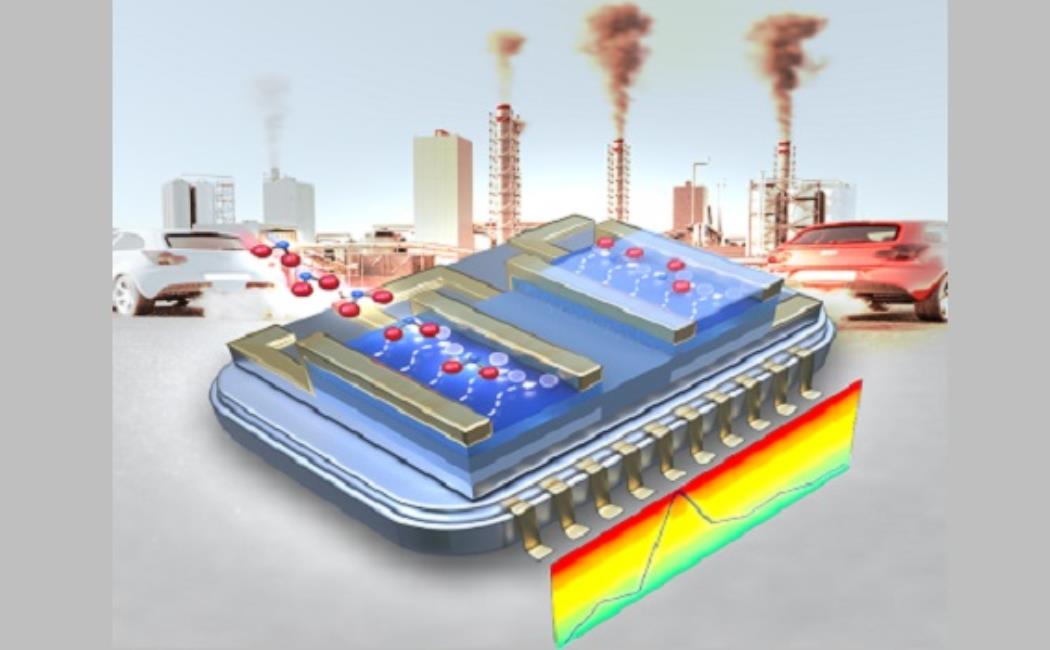
An integrated detector device could form the basis of a distributed air-quality sensor network.

Nitrogen dioxide molecules from vehicle emissions or industry can be detected by the integrated sensor before they reach dangerous concentrations.© 2020 KAUST
The design for an electronic sensor that sounds the alarm if toxic industrial and vehicle-exhaust gases exceed safe levels could lead to cleaner air in many cities. KAUST researchers have developed a small, low-cost device that senses nitrogen dioxide (NO2); it could be deployed in potential hotspots around cities, alerting authorities if levels of the harmful gas start to spike.
Most existing NO2 detectors are large, complex machines suited to laboratory use, whereas the compact new device is designed to form part of a distributed network of air quality sensors. “Our sensor exhibits very high sensitivity and selectivity for NO2, operates at room temperature and has very low power consumption,” says Mani Vijjapu, a Ph.D. student in Khaled Salama’s lab, who led the research.
However, the biggest advantage over previous designs is that the gas detector brings together all the necessary sensing and signal processing components within a simple, fully integrated system, Vijjapu says. Despite its simplicity, the device’s output signal varies according to NO2 concentration.

NO2 molecules (red and blue spheres) in the air are drawn to the electrons (black spheres) on the sensor’s surface, triggering a detection event (left). The sensor is revived with light (right), which generates charged particles that neutralize and release the adsorbed NO2. © 2020 Vijjapu et al.
The gas detector’s high performance, low power consumption and fully integrated design all stem from the NO2-sensing thin-film transistor at the core of the device. Previous sensors have used metal oxides that are sensitive to NO2 only when heated or continuously irradiated with light. This time, the team used a semiconductor called indium gallium zinc oxide (IGZO). “As a gas sensor, the IGZO-based thin-film transistor has multifaceted benefits,” says Sandeep Surya, a postdoctoral researcher in Salama’s team.
The IGZO thin-film transistor acts as both an electronic component of the device and also as the NO2-sensing layer. The strongly electron-accepting NO2 molecule is drawn to the electrons on the transistor’s surface. The more NO2 molecules that adhere to the IGZO, the more electrons are depleted from its surface, altering its electronic output and triggering an NO2 detection alert.
After a detection event, the sensor is reset by reviving the IGZO layer with the light from an integrated blue LED. Similar to a solar cell, the light generates negatively charged electrons and positively charged holes in the IGZO, which neutralizes the adsorbed NO2 and releases it from the surface. “This is the first study to achieve sensing and revival of a semiconducting metal oxide-based thin-film transistor sensor at room temperature,” says Surya.
“The next step is to translate our research into a prototype and maybe even a product by working with industry," Salama says. “We are also interested in exploring other materials to detect other hazardous gases in the environment.”
KAUST DISCOVERY





